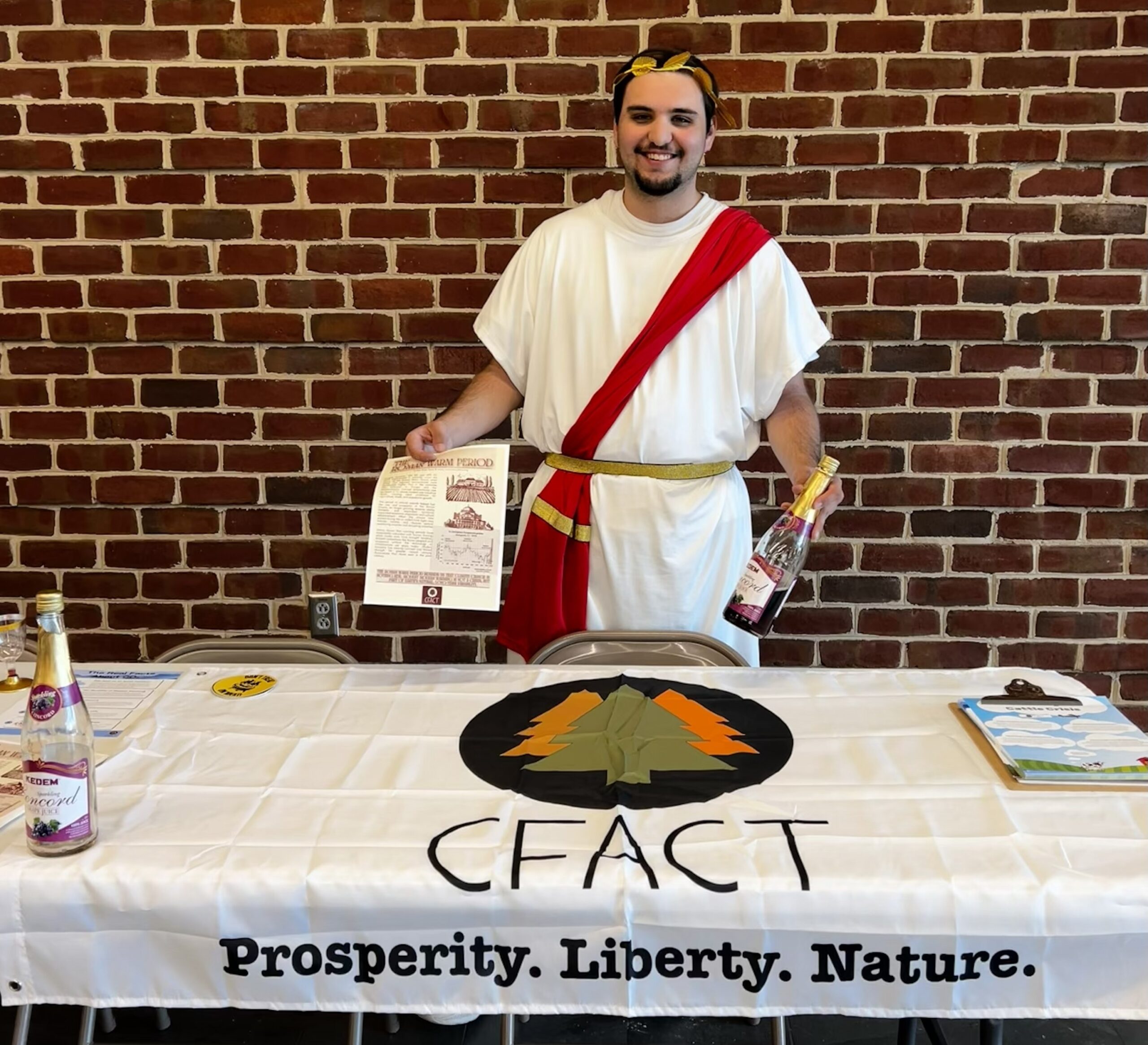At the University of Texas at Austin, CFACT collegian Thien Nguyen and his friend turned an ordinary campus courtyard into a powerful lesson on the hidden human and environmental costs behind today’s “green energy” agenda. His event, “Who Mined It?”, invited students to look beyond political slogans and confront the very real consequences of the mining operations required to produce solar panels, electric vehicle batteries, and other so-called renewable technologies.
Positioned just off a heavily trafficked sidewalk, Thien’s table, covered in flyers and stickers, quickly became one of the most engaging displays on campus that afternoon. Dozens of students stopped by—many out of curiosity, others because the visuals spoke for themselves. Spread across his posterboard were striking images of open-pit strip mines, toxic waste runoff, and most sobering of all, photographs of slave and child laborers working in unsafe and inhumane conditions. These were not the glossy brochure images of “clean energy” students are accustomed to. They were the real-world costs. To sweeten the interaction, Thien offered chocolate candy that looked like rocks to participants, a clever and lighthearted way to get passersby engaged before diving into the heavier subject matter.
After taking in the display, students were handed laminated cut-outs of various minerals—cobalt, lithium, nickel, graphite, and others central to modern renewable tech. Their task was simple but revealing: match the mineral to the mining practice shown in one of the posterboard images, attaching their answer to the display using Velcro strips. Some students hesitated, thrown off by how shocking the pictures were; others jumped right in, eager to test their knowledge. All walked away with a deeper understanding of what powers their electronics and EV dreams.
Thien used each match as a springboard for discussion. When a student placed cobalt under an image of child miners, he explained how over 70% of the world’s cobalt comes from the Democratic Republic of Congo—where tens of thousands of children and impoverished adults labor in dangerous conditions for mere dollars a day. When another matched lithium to a sprawling strip mine, he walked them through how lithium extraction devastates local ecosystems and drains critical water supplies.
The conversations were steady, thoughtful, and eye-opening.
As one student told him, “I honestly had no idea any of this was connected to green energy.”
This event exemplifies CFACT’s Green Energy Kills Campaign, which shines light on the environmental destruction and human suffering hidden behind the renewable energy narrative. Unlike corporate marketing departments and political activists, CFACT collegians aren’t afraid to show the truth—and students respond to authenticity.
By the end of the day, Thien had engaged dozens of young Texans with facts they had never been exposed to in class or in media. Many lingered for extended conversation, asking follow-up questions and expressing surprise at how dramatically the reality of “green” technology conflicts with what they’ve been taught.
Thien’s work is a perfect demonstration of why CFACT’s on-campus outreach matters. When students learn the full story—not just the sanitized talking points—they’re far more willing to re-evaluate the policies and narratives pushed onto their generation.
Thanks to his initiative, scores of UT Austin students now understand a crucial truth: energy policy is never impact-free. And in far too many cases, the burden of “renewables” is borne not by wealthy activists, but by the world’s most vulnerable populations.





